AI orchestration: A beginner’s guide for 2025

Using AI effectively requires a business to integrate a variety of AI models, tools, and systems into their tech stack. However, without a way to coordinate these different technologies as part of a unified whole, operations become siloed and disjointed—which defeats the point of using AI in the first place.
This raises the question: how do you get disparate AI components to communicate and work together seamlessly? The answer lies in AI orchestration.
In this guide, I’ll walk you through the ins and outs of AI orchestration. You'll learn everything from the basics to best practices, and by the end, you'll be ready to harness your diverse AI capabilities as one unified, automated operation.
What is AI orchestration?
AI orchestration is the process of coordinating and managing AI models, tools, and systems so they work together effectively. It provides the architectural patterns that connect AI components to each other and existing systems, enabling AI to share data, communicate, and collaborate seamlessly as part of a unified whole.
Like the conductor of an orchestra, AI orchestration harmonizes the diverse elements of an AI system, allowing each component to do its part in creating a successful outcome. When orchestrated properly, AI can access data sources, use tools, and function in ways a siloed component never could.
Ultimately, AI orchestration enhances the efficiency, scalability, and effectiveness of AI-driven systems, opening the door to end-to-end process automation.
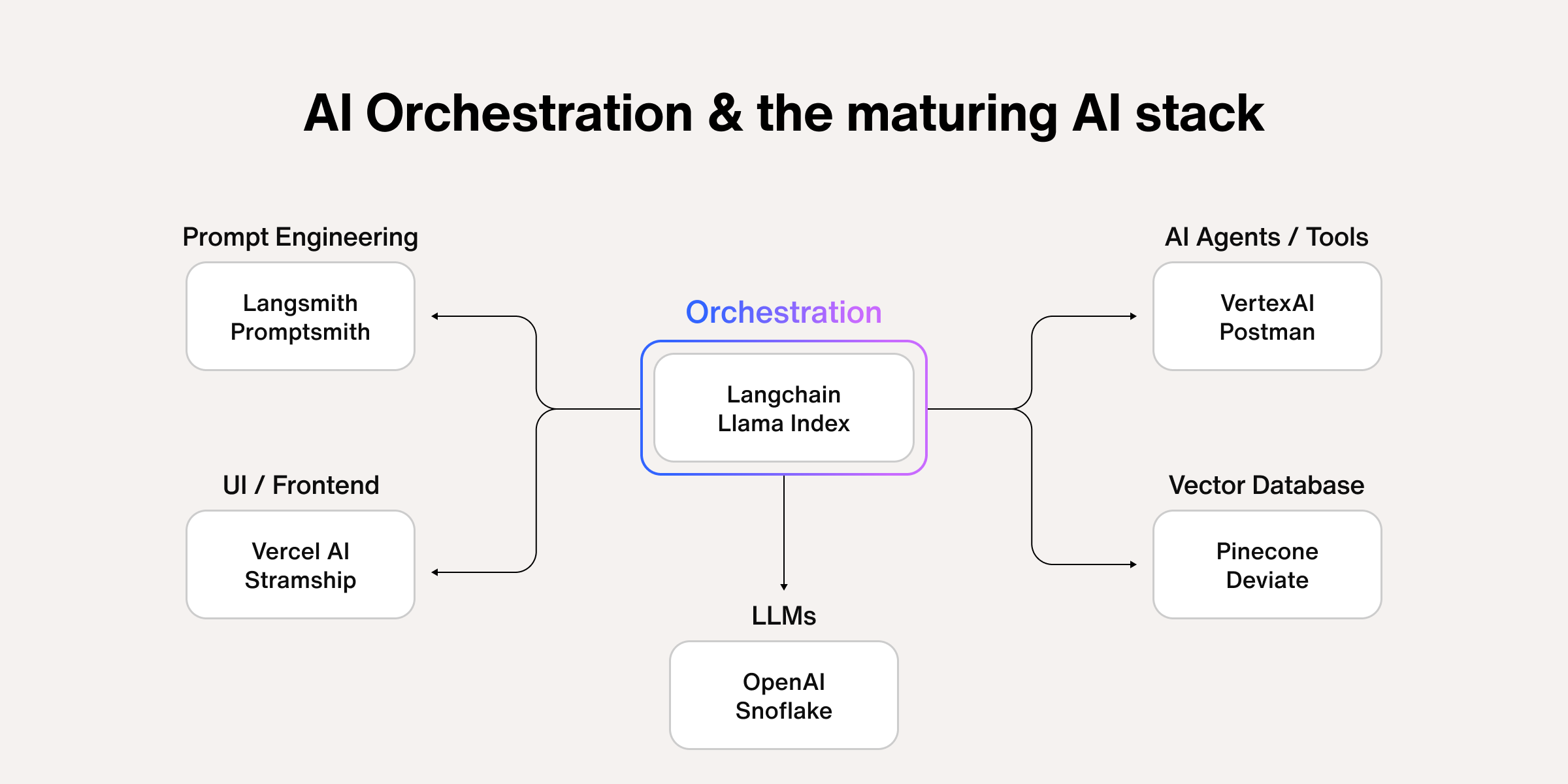

8 major support hassles solved with AI agents
What’s the difference between AI orchestration and AI workflow automation?
AI orchestration and AI workflow automation are interconnected ideas, but they're not the same thing.
AI orchestration: Manages the entire ecosystem of AI models, tools, and workflows to ensure their seamless collaboration and scalability.
AI workflow automation: Automates specific tasks or parts of a process within a larger orchestrated AI system.
In short, AI orchestration enables a business to get value from AI workflow automation, as it serves to operationalize and optimize individual automated AI agentic workflows.
Real-life example of AI orchestration
Imagine a ride-sharing platform like Uber. The company uses different AI for specific tasks, including to match drivers with riders, optimize pricing, and predict demand.
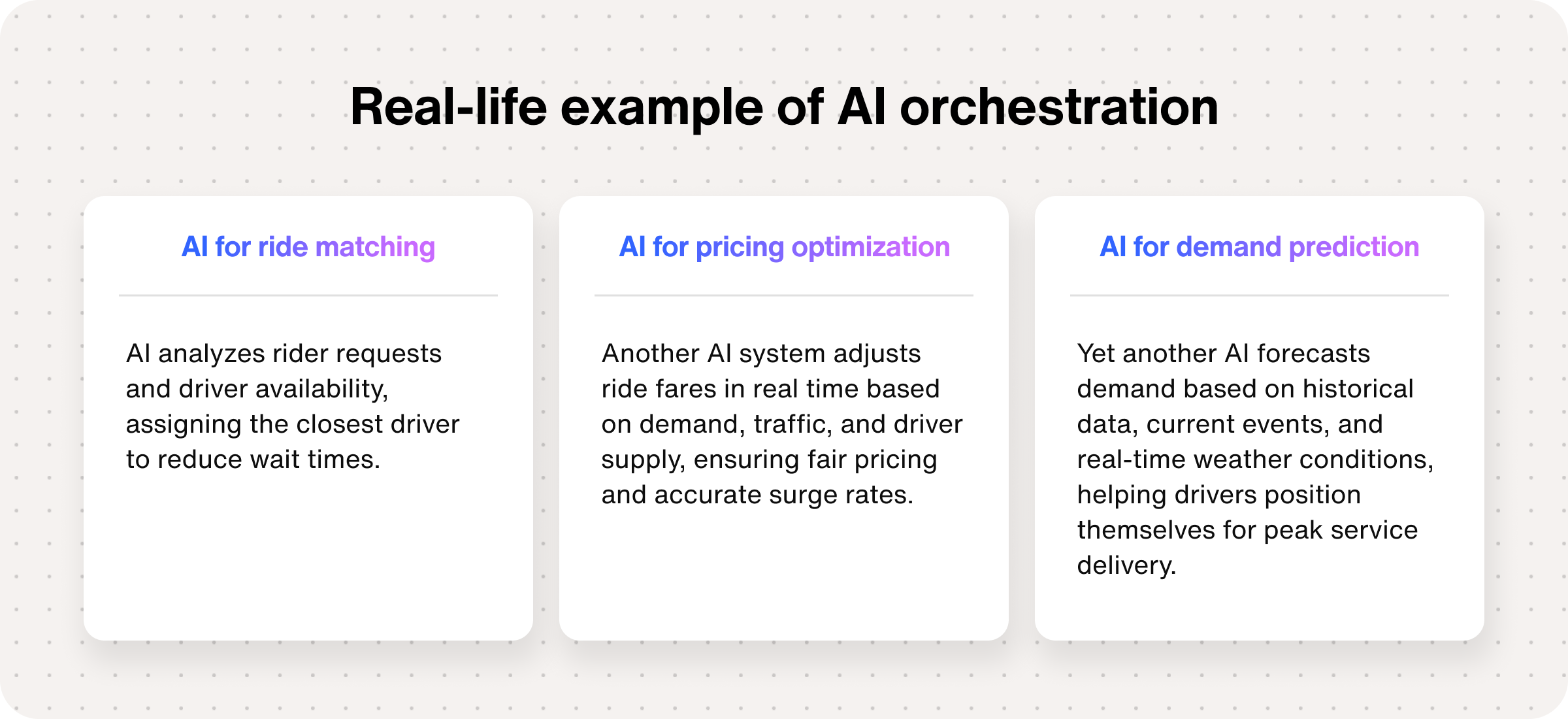
Without AI orchestration, these systems might not share data effectively in real time, resulting in inefficiencies—slower ride matching, inaccurate surge pricing, drivers struggling to meet demand—all of which reduces revenue and customer experience.
But with AI orchestration, these systems work together seamlessly:
The demand prediction AI informs the ride-matching AI, ensuring drivers are positioned in high-demand areas before requests surge.
The pricing AI adjusts fares dynamically based on forecasts, real-time demand, and availability.
The ride-matching AI factors in surge pricing and driver availability, pairing riders and drivers to optimize pricing and service delivery.
For a visual example of AI orchestration at work, the diagram below shows various vertical AI agents within for an orchestrated insurance business workflow:
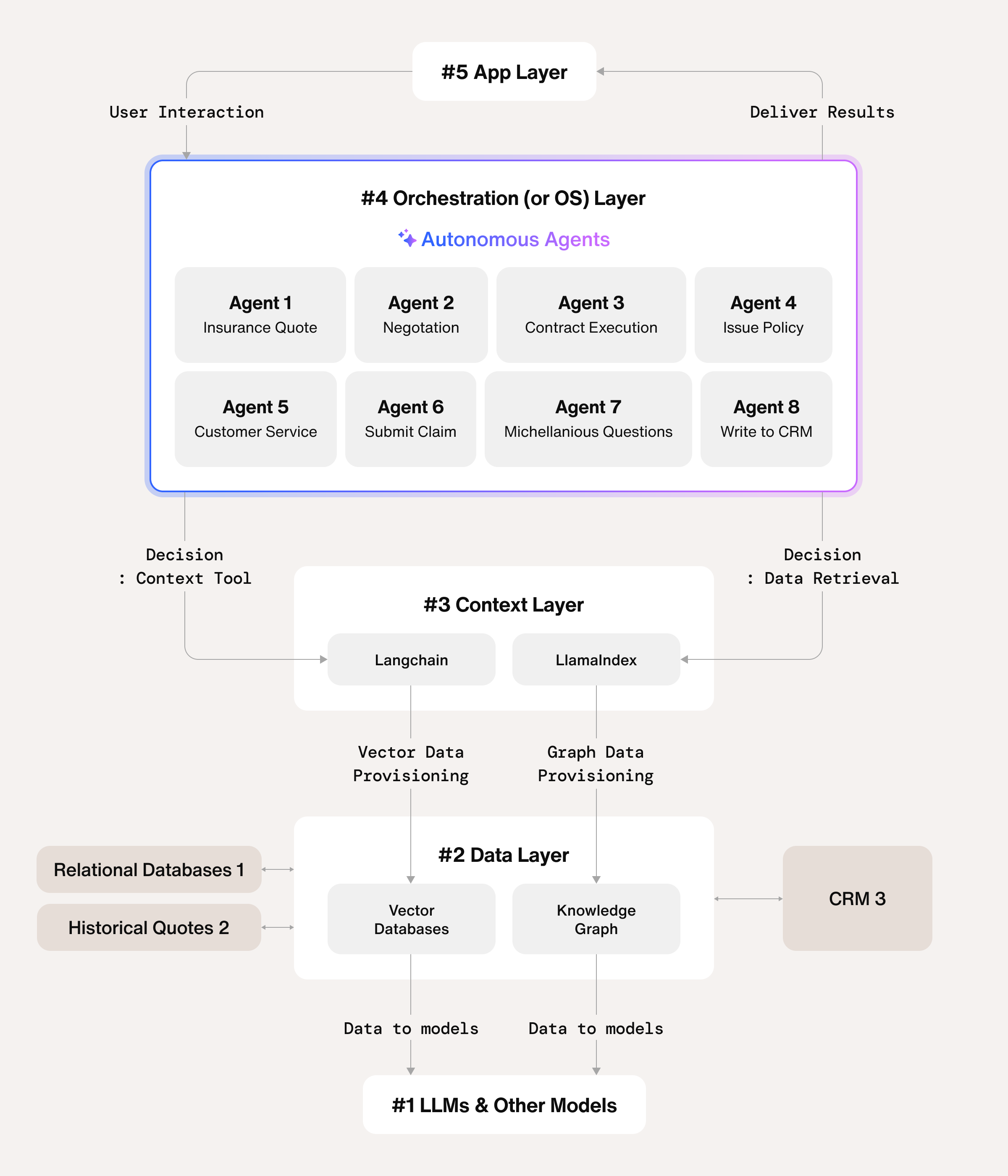
The 3 key components of AI orchestration
AI orchestration bridges the gap between the components of an AI system, ensuring all parts work in harmony to maximize the efficiency and effectiveness of the overall system.
Broadly speaking, the core components of an orchestrated AI system fall into three main buckets:
Integration
Automation
Management
1. Integration
Integration is what enables different AI models, tools, and data sources to work together. Once integrated, all parts of the AI ecosystem can communicate and collaborate as a a single unified system.
Key elements:
Data integration: Ensures that data flows seamlessly between systems so AI components have the data needed to function effectively. This requires the creation of data pipelines, or automated processes that collect, process, and move data across systems while optimizing performance, scalability, and reliability.
Model integration: Enables different AI models to interact with each other through frameworks and tool use (like APIs). This enables models to share capabilities and outputs without human intervention.
2. Automation
Automation is the use of technology to handle tasks that are traditionally done by humans. For example, an AI concierge automates customer service, answering FAQs and freeing humans to focus on higher value work.
AI orchestration is what automates the interactions between different AI applications and systems, paving the way for AI workflow automation. By managing dependencies, optimizing decision-making, and synchronizing processes in real time, orchestration is key to reducing manual intervention and improving operational efficiency.
Key elements:
Automated model selection: Enables AI systems to dynamically select the right model based on context or system conditions, matching models to tasks automatically for optimal effectiveness and efficiency.
Resource allocation: AI orchestration platforms can dynamically allocate computational resources based on the evolving needs and priorities of different tasks.
Self-healing systems: Orchestrated systems can monitor system health to automatically, detecting and self-correcting issues or inefficiencies in workflows without human intervention.
3. Management
AI systems must be well managed to maintain the health, effectiveness, and compliance of AI components throughout their lifecycle. AI orchestration oversees the entire AI lifecycle, focusing on key areas such as:
AI workflow management: Defining the sequence of tasks to be executed by AI models and its data dependencies within a process to minimize manual intervention.
Performance monitoring: Continuously tracking the performance of AI systems to ensure they operate optimally and making adjustments as needed.
Compliance and security: Ensuring all AI operations comply with relevant laws and regulations, and maintaining robust security protocols to protect data and systems from unauthorized access.

Automate customer service with AI agents
How does AI orchestration work?
AI orchestration is made possible by two essential technologies: APIs and cloud computing. And while not essential, AI orchestration platforms are a great help in streamlining the process of deploying and maintaining AI systems.
Here's a brief summary of the role of each technology:
APIs
APIs are the backbone of AI orchestration, allowing different software components and services to communicate and work together. In the context of AI orchestration, APIs enable the disparate AI components to seamlessly exchange data and functionality, regardless of their underlying programming languages or architectures.
Cloud computing
Cloud computing platforms provide the scalable infrastructure needed for deploying and managing AI systems. They provide the flexibility, cost-efficiency, and computational power needed to process large datasets and execute complex AI algorithms without bottlenecks. Additionally, cloud platforms simplify the integration and management of AI systems across environments and locations.
AI orchestration platforms
AI orchestration platforms automate, manage, and streamline the deployment, execution, and lifecycle of AI workflows across various environments. They coordinate the various AI components—such as machine learning models, data pipelines, APIs, and computational resources—to ensure seamless integration, scalability, and operational efficiency.
By handling various tasks like workload scheduling, dependency management, and resource optimization, they help organizations to deploy and maintain AI systems with manual intervention.
Benefits of AI orchestration
The performance, scalability, and adaptability of AI systems are all enhanced by proper AI orchestration. In this section, we’ll take a deeper diver into the major benefits of AI orchestration:
1. Operational efficiency
By streamlining operations and reducing the need for human intervention, AI orchestration represents a giant leap in efficiency. It allows a business to process tasks faster, more accurately, and cost-effectively—opening the door to scaling intelligent automation for routine workflows.
For example, without AI orchestration, if you wanted to pull data from multiple sources into a marketing campaign to optimize audience segmentation, this would have to be done manually. But with AI orchestration, you can automate this sharing of data and move closer to end-to-end workflow automation.
AI orchestration also adds efficiency through:
Automated deployment: Allows for new AI models to be deployed automatically, and for automated updates to existing models across environments.
Resource optimization: Ensures computational resources are allocated dynamically based on workload requirements. This prevents underutilization and over-provisioning, reducing waste and operational costs.
2. Improved performance of AI systems
AI orchestration enables a business to coordinate its AI stack to tackle problems that would be too complex for the capabilities of a single AI component.
For example, in healthcare, a AI-powered diagnostic systems integrate multiple specialized AI models—such as medical imaging analysis, patient history, and predictive analytics. When orchestrated, the different models can analyze patient health from multiple angles, then synthesize the separate inputs into one holistic output that’s more accurate and reliable than each model acting by itself.
Here are a few more examples of how orchestration improves AI system performance:
Continuous learning and improvement: Orchestrated AI systems can automatically incorporate feedback on outputs to continuously refine their models and adapt over time. This enables AI to become more accurate, efficient, and adapted to business needs without manual updates.
Visibility and monitoring: Enables centralized monitoring of all AI workflows, helping teams to track progress, measure performance, and identify inefficiencies in AI-driven processes for better decision-making, risk mitigation, and proactive optimization.
Dynamic workflow adaptation: AI workflows can be orchestrated to adapt dynamically to changing inputs and dynamic environments, ensuring the most effective processes are followed even in unpredictable scenarios.
The 7 core steps to implement AI orchestration
As we’ve seen, AI orchestration is a game-changer for organizations looking to make the most of their AI investments.
Here are the key steps in the journey towards the most effective AI system:
1. Define your needs and goals: Start by identifying the processes that would benefit from AI orchestration. Whether it's AI for customer service, refining code, or data processing, defining clear objectives with measurable KPIs will help you measure success and manage project scope.
2. Prepare your data: AI systems require vast amounts of data to function effectively. Ensure you've established processes for data collection, data cleaning, and data management so data is ready to train models and other systems.
3. Design your architecture: An ideal architecture will allow for the efficient data flow and communication between different AI models, both for current needs and future initiatives.
4. Select your tech stack: Choose an AI orchestration platform that can manage your chosen AI models, data flows, and workflows effectively. Consider the scalability, security, and integration of the platform with existing systems, AI agent platforms, and future technologies.
5. Create your AI workflows: Build your automated AI workflows using your chosen orchestration platform. This involves mapping out the sequence of AI model execution, decision points, human in the loop (HITL) interactions where necessary.
6. Integration and testing: Connect your AI models to relevant data sources through the orchestration platform. Be sure to conduct thorough testing at this phase to ensure smooth data flow and real time updates, and address any technical issues that arise.
7. Deployment and monitoring: Continuously track your key metrics to assess the effectiveness of AI models, systems, and workflows. Implement feedback loops to refine models, making adjustments as needed to optimize operations.
Learn more: How to build an AI agent: The 8 key steps

Boost CSAT with proactive AI customer service
Challenges of AI orchestration
Creating the infrastructure to manage multiple AI agents, tools, and systems is a complex process that presents challenges in two main areas:
Technical complexity: For engineering teams, it’s daunting to manage, integrate, and scale a diverse set of AI components with external systems.
The human element: This includes skill gaps in AI use and software engineering, change adoption, and ethical considerations requiring human oversight.
Challenge 1: Implementation complexity
Implementing disparate AI systems is complex and demands advanced technical expertise to integrate tools and systems effectively. Without proper execution, businesses risk downtime, inefficiencies, and disruptive data errors.
Solution: Provide your team with a clear strategy, comprehensive training, and the resources to ensure effective implementation and integration.
Challenge 2: Scalability
Orchestrating AI workflows at scale can lead to performance bottlenecks if resources aren’t managed efficiently, leading to downtime and slowing when faced with large datasets or demand spikes.
Solution: Use cloud-based tools for AI orchestration that dynamically adjust resources based on demand for system elasticity.
Challenge 3: Security risks
AI systems and orchestration tools may handle sensitive customer data, increasing the risk of data breaches, noncompliance, and security vulnerabilities.
Solution: Implement robust security protocols, routine security audits, and making sure that all systems comply with relevant security standards and safeguard customer data.
Challenge 4: Latency issues
Ensuring low latency for real-time AI workflows can be difficult, particularly when multiple models or services are involved. High latency can degrade the effectiveness and user experience of dynamic AI systems used for high-frequency trading, chatbots, or cybersecurity.
Solution: Ensure task efficiency through the use of edge computing, streaming data pipelines, parallel processing for workflows, and data preprocessing.
Challenge 5: Interoperability
There are currently no universal standards for AI orchestration frameworks or tools, which makes interoperability between systems a challenge. This lack of standardization complicates the implementation of new solutions, potentially leading to system fragmentation or vendor lock-in.
Solution: Promote consistency and compatibility by opting for well-established frameworks and tools for AI orchestration, including standardized interfaces and communication protocols. Implement coding and naming conventions to maintain clarity and consistency across scripts, models, and configurations to facilitate collaboration and maintenance.
Best practices for AI orchestration
If you’re considering AI orchestration in your organization, here are some best practices to guide you to success:
1. Start with a pilot program
Begin with a small test project that integrates a few AI systems or just focuses on one specific workflow. This allows you to manage the complexities of AI infrastructure and understand its nuances on a smaller scale before expanding to more complex workflows.
2. Focus on data quality and access
AI systems require access to clean, well-organized, and high-quality data to function effectively, especially when it comes to decision-making, interoperability, and real-time workflows. Data scientists can help you validate data quality, pre-processing, and optimize data pipelines.
3. Design modular AI workflows
Organizations can simplify the management of AI workflows and orchestration layers with a modular approach to system architecture. By designing AI workflows as a series of modular building blocks, individual components can be modified or replaced without disrupting the entire system.
Modular architecture is also reusable, helping to promote efficiency and consistency across future projects. Each component is decomposed into small, loosely coupled services that can be developed, deployed, or scaled independently, offering greater value and flexibility to an organization.
4. Invest in AI skills
AI orchestration requires expertise with machine learning, natural language processing, data science, software engineering, and complex integrations. Equip your team with the skills required to tackle AI orchestration and infrastructure effectively. This involves ongoing training and AI education to keep pace with evolving best practices and AI technologies.
5. Establish governance and security
Establish guidelines for data privacy, security, and responsible AI usage that are compliant with industry regulations. To mitigate risk, design AI workflows with privacy, data, and compliance in mind. Also implement robust security measures within data processes—such as secure business APIs, data encryption, and regular security audits—to protect against vulnerabilities.
6. Monitor and optimize
Continuously monitor and optimize your orchestrated AI systems and workflows to ensure they deliver business value. Track the efficiency and performance of data processes in analytics, and gather user feedback to identify areas for improvement as part of a data-driven, iterative approach to success.
The leading AI orchestration tools
AI orchestration requires a varied toolkit for managing, deploying, and optimizing the operations of AI system. Typically, a central orchestration platform coordinates the interactions of the different AI components, enabling AI workflow automation as well as managing and tracking data flow, memory, resource usage, and handling failure events.
Here are some of the leading tools for AI orchestration:
Apache Airflow
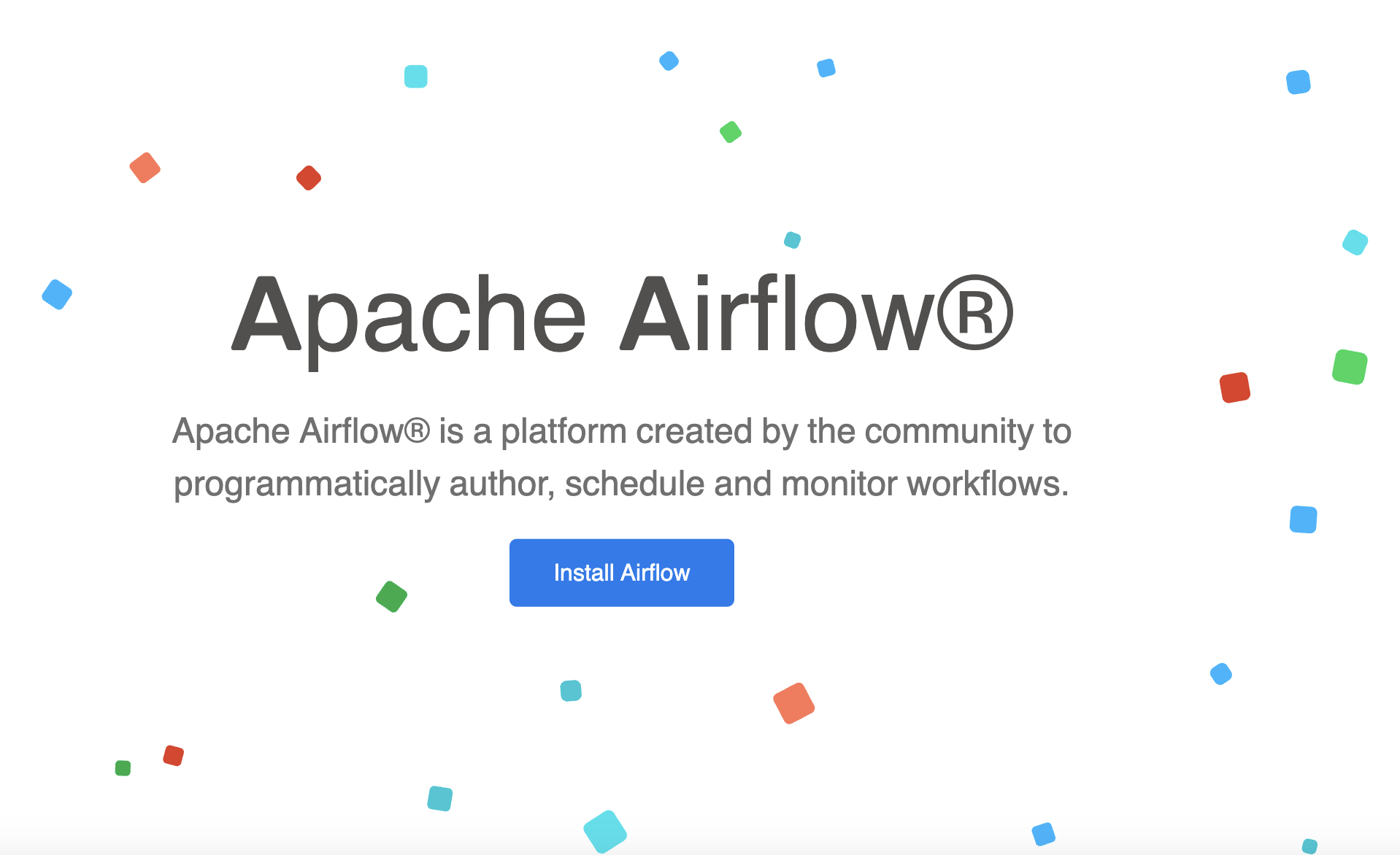
Airflow is an open-source platform for orchestrating complex end-to-end workflows. It allows you to define, schedule, and monitor AI agentic workflows, plus set up and manage data pipelines required to feed data into AI models, ensuring models are trained, up-to-date, and performing optimally. Often used in machine learning and data science pipelines.
Kubernetes
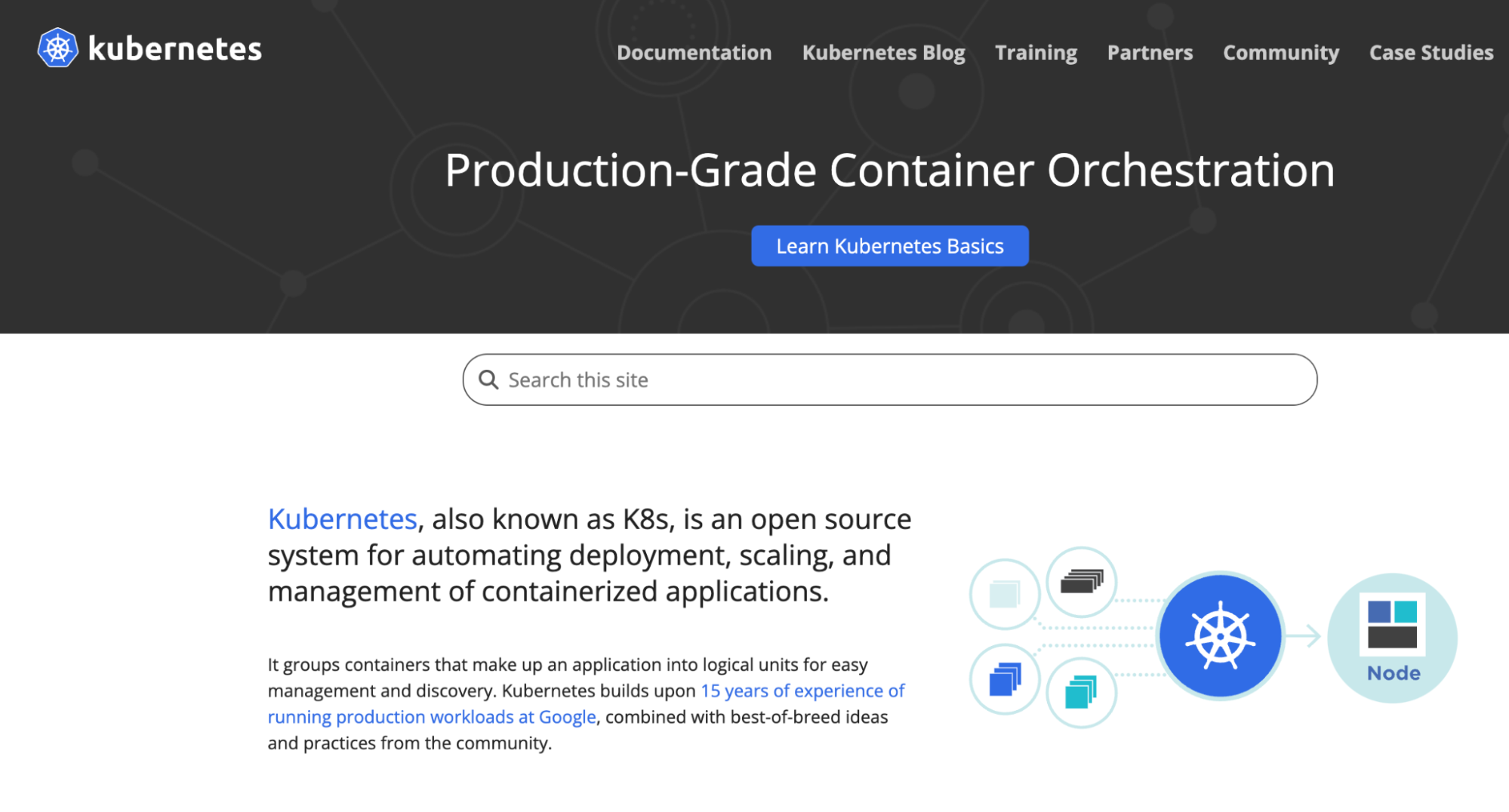
Kubernetes is an open-source platform that automates the deployment, operations, scaling, and management of containerized AI applications. It provides the foundation for orchestration in cloud environments, serving as a central hub for efficient management across the AI lifecycle, and is used to manage microservices and distributed applications. Kubernetes can also manage AI workloads, providing features like resource allocation, scaling capabilities, and monitoring tools for workload optimization.
Apache NiFi
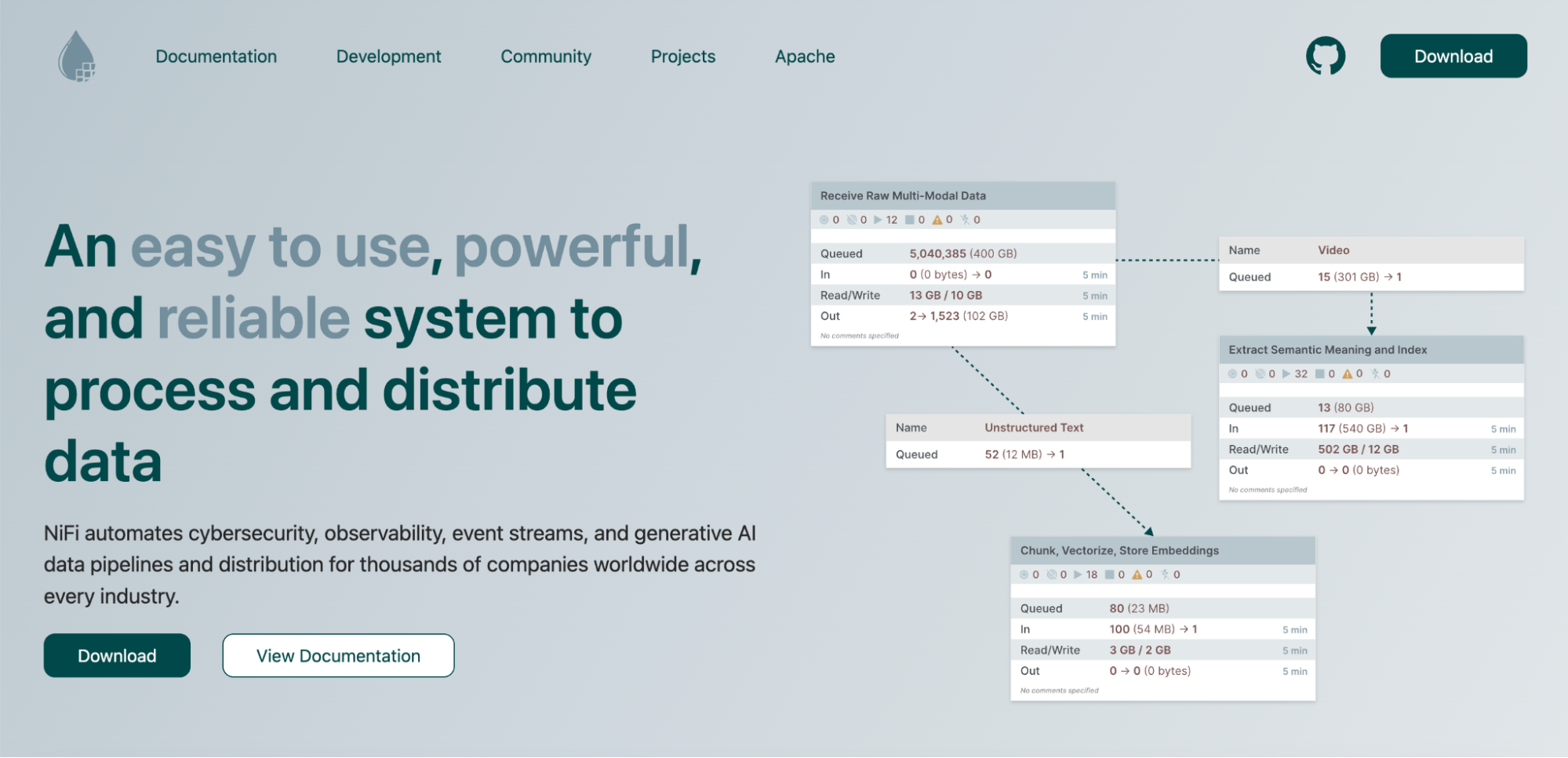
Apache NiFi is an open-source data integration tool that supports the automation of data flows. Essentially a data pipeline builder, it provides a user interface to create data pipelines that are flexible and scalable. It supports data routing, transformation, and system integration, and is commonly used for data ingestion, transformation, and movement in AI and data analytics workflows.
MLflow
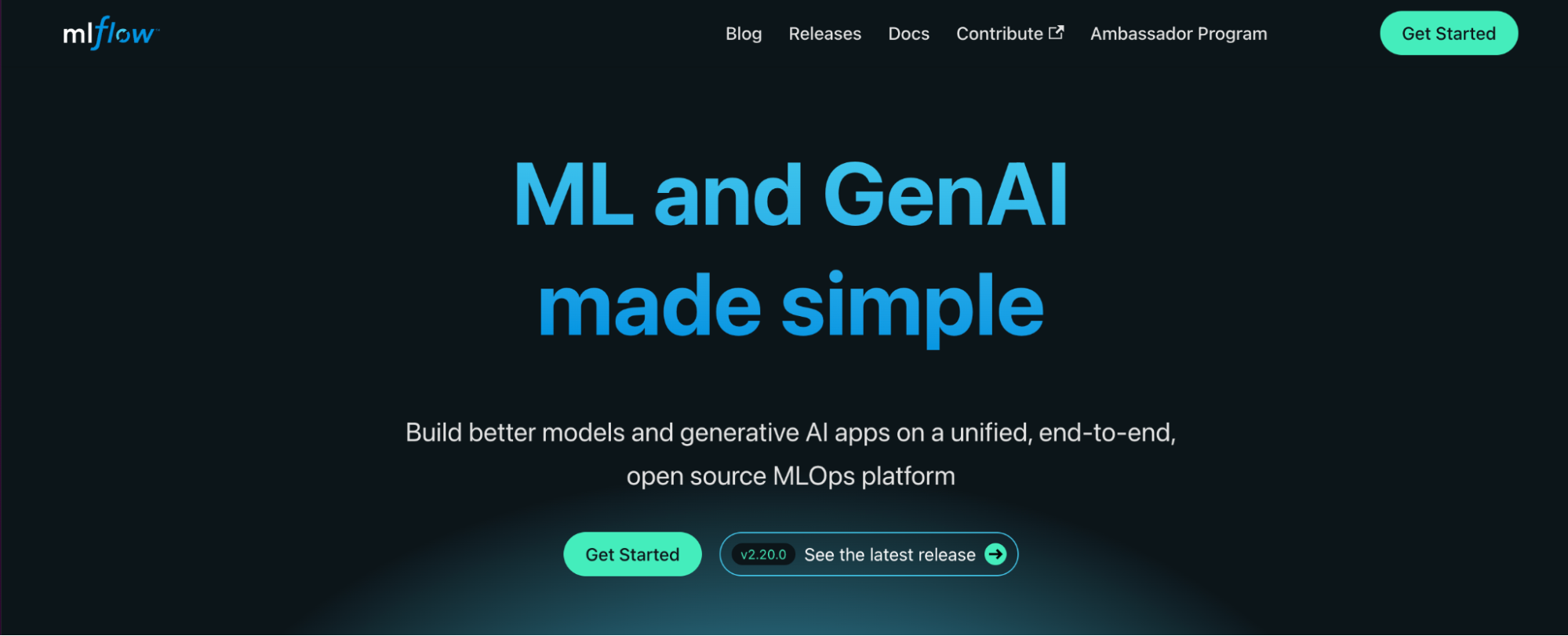
MLflow is an open-source platform for managing and streamlining the end-to-end machine learning (ML) cycle. It supports multiple cloud platforms and ML frameworks, and offers components for tracking experiments, code packaging, and deploying models.
Flyte
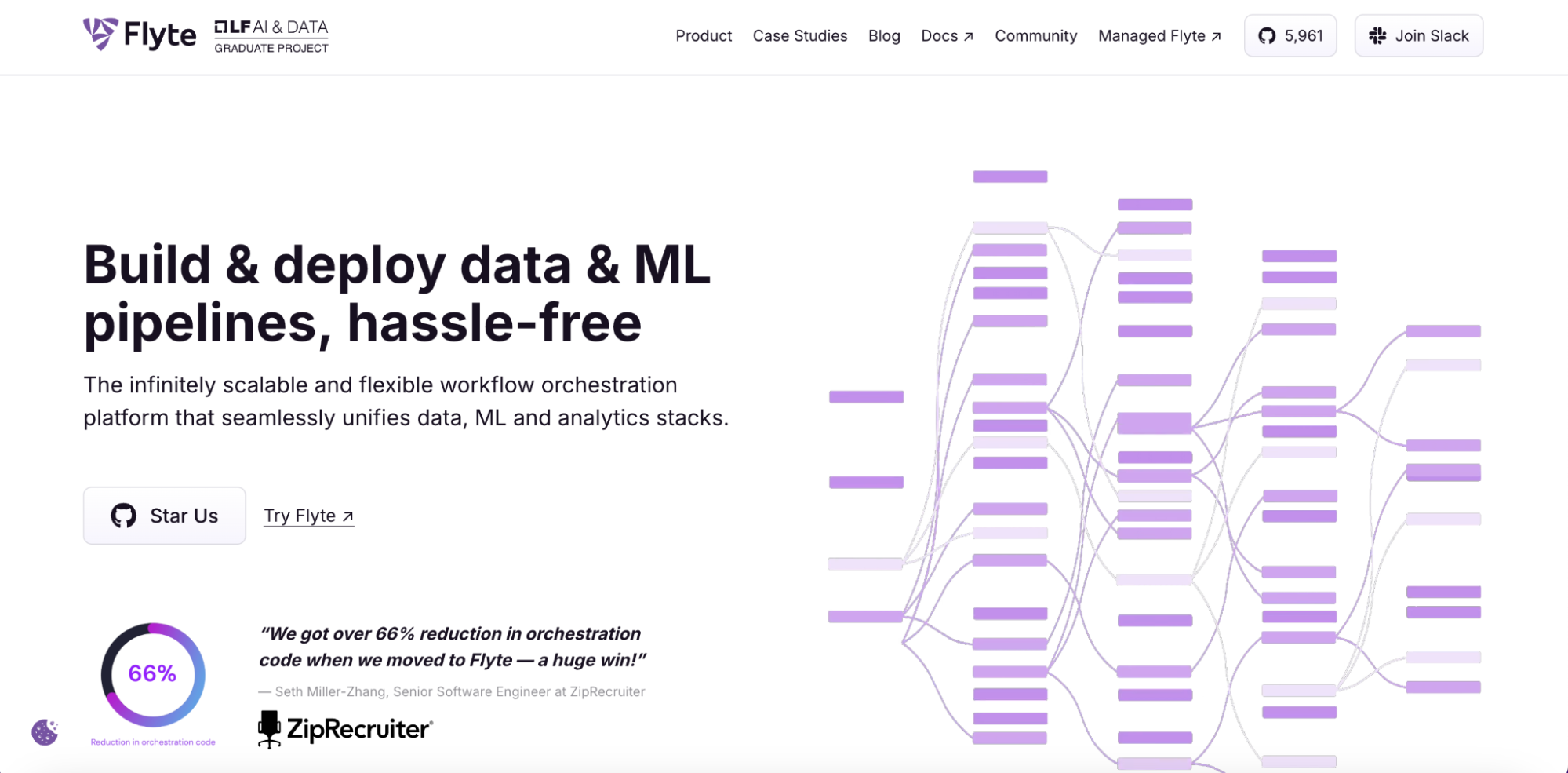
Flyte is an open-source workflow orchestration platform for building, scaling, and managing production-grade AI pipelines. Built to handle large-scale data processing, it offers the scalability to meet demanding workloads across different teams and technologies in an organization. Flyte also focuses on reproducibility, allowing you to create ML and data pipelines that are repeatable and auditable through versioning and tracking.

Delight customers with AI customer service
Trends in AI orchestration for 2025
AI orchestration is forecast to see increased adoption in 2025 for several reasons:
- The increasing complexity of AI-driven business processes
- The need to manage large volumes of data in real-time
- The pressure to get value from AI projects.
Here are a few more trends in AI orchestration to watch for in 2025:
1. Specialized models: The innovation of vertical AI agents allows organizations to develop specialized AI models that are more precise and performative than general-purpose AI. This will enhance the competitive advantage of organizations that master AI orchestration.
2. Model gardens: This is a repository of tried and tested AI models. For AI orchestration, this could enable a business to quickly switch between models at any time. This increase flexibility when faced with new use cases and also reduces reliance on any single AI system.
3. Multi-cloud integration: AI orchestration is evolving to manage AI operations across hybrid and multi-cloud environments, enabling more robust data management and processing capabilities
4. Autonomous systems: There's a growing emphasis on creating self-managing and self-healing AI systems that can operate without human intervention, enhancing resilience and reducing downtime.
Getting started with AI orchestration
With AI tools proliferating, it’s becoming clear that the true value of AI comes from integrating a variety of intelligent tools into core processes to create efficiencies and cost savings. This is where AI orchestration shines.
Deploying AI orchestration platforms, however, demands a substantial investment in both technology and skilled personnel. As a result, few have taken the leap. But those who master orchestration will gain a competitive edge from the enhanced efficiency, scalability, decision-making, and automation capabilities of their AI investments.
If you're ready to build AI for customer service or any other application, Delight can help. Leverage a custom AI agent builder that's easy for all teams to use, plus secure, scalable infrastructure and seamless integrations so you can adapt to the evolving AI landscape without sacrificing performance. Contact our team of AI experts to learn more.
To find out more about AI, check out these related resources:










